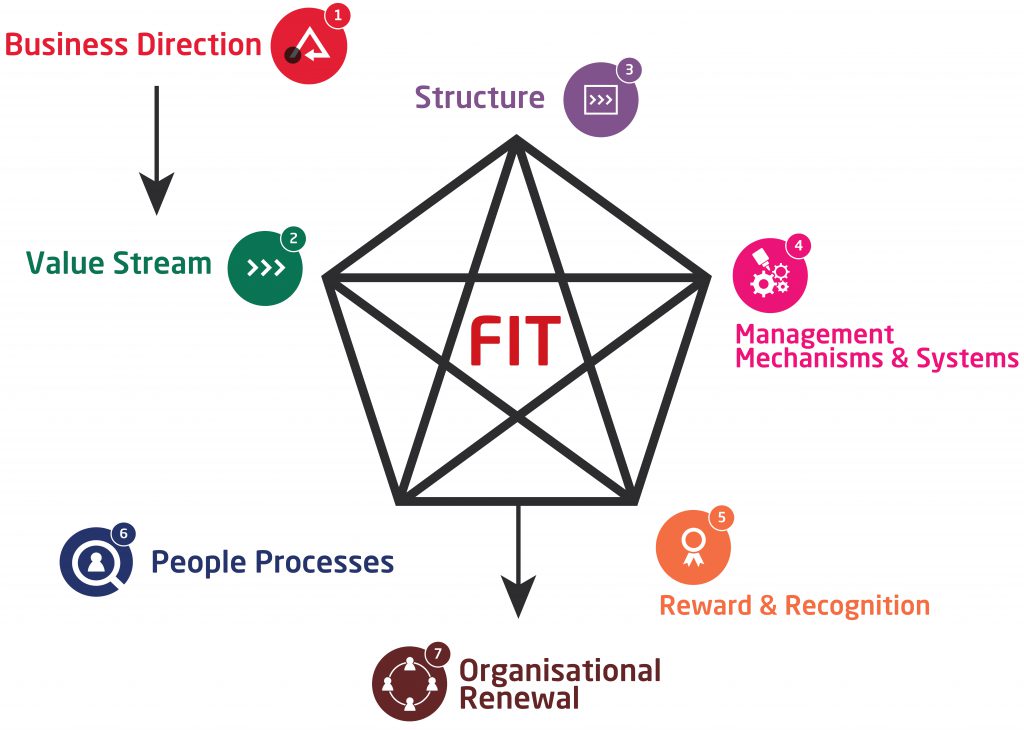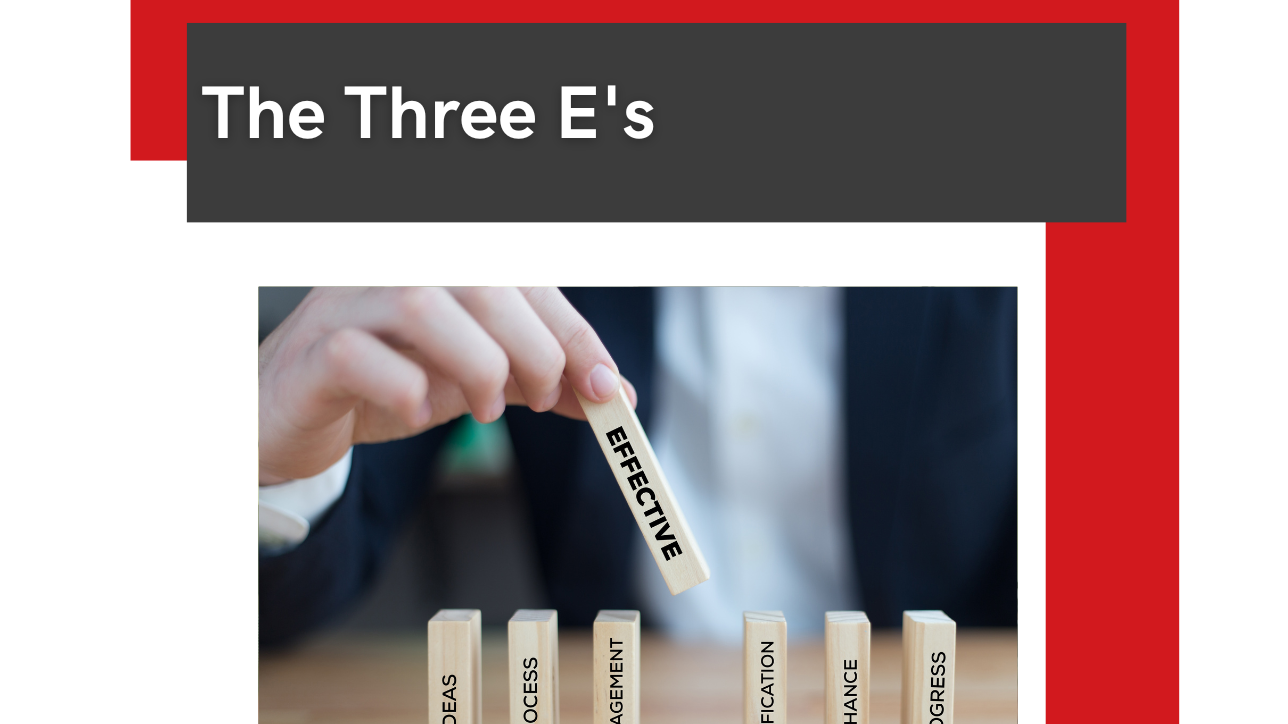
These days it seems the lines between operational effectiveness, efficiency, and excellence are blurred. As organization design consultants, we want to be clear about how these words are being used and how they can affect an organization’s behavior and functionality.
Effectiveness, efficiency, and excellence have been used frequently in business situations, but a recent encounter with buzz-word bingo made me think more deeply about how we use each word. If you’re not familiar with buzz-word bingo, it’s a bingo card used during conference calls as a management mechanism.
Walking into a meeting room the other day after a Weekly Ops Call, I picked up a discarded copy of the ‘card’ used by one of the participants. Immediately, I began to wonder how and why the words were used in the meeting. How did the conversation around effective, efficient, excellence, strategy, and organization design play out?
The simple words can lead to endless debate and misunderstanding when used in an operational context. So, before we bring in the big guns of strategy and organization design, let’s have a go at unpacking operational efficiency, operational effectiveness, and operational excellence.
Operational effectiveness
Operational effectiveness is about doing the right things. It revolves around making sure that all the core work done by the organization creates value to their end customer; that the core Value Stream is correctly designed. Organizational effectiveness denotes the concept of how effectively an organization achieves the outcomes it intends to produce. It’s about WHAT work is done.
Operational efficiency
Operational efficiency is about doing things right. In other words, it means ensuring that the workflows are error-free, thus preventing delays and cost increases caused by delays and rework. Or, preventing below-specification products and services from reaching the customer. Operational efficiency entails the capability of an organization to deliver products or services to its customers in the most efficient manner possible, while still ensuring the high quality of its products, service, and support. It’s not about cost-cutting — it is about HOW work is done.
Operational excellence
Operational excellence is an organization’s value proposition to its customers; in itself, it’s a strategy. An operational excellence strategy aims to accomplish cost leadership, and it proves ideal for markets where customers value cost over choice, which is often the case for mature, commoditized markets where cost leadership provides a vehicle for continued growth. Operational excellence is about WHY work is done.
What really matters for Operational Effectiveness
Given the three definitions above, it becomes clear that effectiveness and efficiency are not an option for an organization that wants to compete in its chosen way within its market(s). The organization should never be discussing whether they need to be effective or efficient; rather, the only discussion should be about how to be more effective and efficient. This conversation must encompass what work takes place, and then how. So, here’s where we check off our other square on the card; this conversation is about Organization Design.
 Using OTM’s Applied Star Model as a frame of reference, Organization Operational Effectiveness means getting the Value Stream right and being very clear about what value-creating work must be done. Organizational efficiency involves the way in which you’ve placed boundaries around the work and created Structure (how the work gets done). We see two of OTM’s ‘rules’ of organization design coming into play here.
Using OTM’s Applied Star Model as a frame of reference, Organization Operational Effectiveness means getting the Value Stream right and being very clear about what value-creating work must be done. Organizational efficiency involves the way in which you’ve placed boundaries around the work and created Structure (how the work gets done). We see two of OTM’s ‘rules’ of organization design coming into play here.
Rule 2:
Value stream is core work only (value-producing activities). Comes before structure.
Rule 3:
Structure is organizing people around core work. Structure choice must best align with strategy. (Value stream + structure = definition of work).
However, Organization Design work cannot begin without clarity on the Business Direction.
Rule 1:
Form follows function ALWAYS. (Strategy drives all design choices.)
Knowing the Value Proposition (Business Direction) of the organization provides the foundation upon which the Value Stream can then become designed to flow effectively. Then, the work can undergo structuring to run efficiently.
The choice of Value Proposition leads to an organizational excellence strategy. Once an organization defines a simple value stream, the main focus of the organization design often centers on automating processes and procedures. Then, multi-skilled teams work end-to-end in order to streamline operational processes to reduce costs. The strategy lends itself to high-volume, transaction-oriented and standardized products and/or services that have little need for much differentiation.
Leaders in the area of operational excellence remain strongly centralized, with strong organizational discipline and a standardized, rule-based operation. Measuring the performance of key processes and benchmarking costs comprise an integral part of the operations of these companies who relentlessly seek to streamline their operational processes in order to eradicate errors. Disciplines such as Lean and Six Sigma become cultivated in a volume-oriented business model. Examples of companies pursuing this competitive strategy include Wal-Mart, IKEA, Southwest, and other low-cost airlines, McDonald’s and FedEx.
So, let’s go back to our Weekly Ops Meeting. Looking at their bingo card, we can see that they were having a conversation about the right things; they talked about effectiveness, efficiency, excellence, strategy, and organization design. What don’t we know from their bingo card? The order in which they discussed these topics. Did they have an effective conversation?
I feel tempted to reinvent Buzz-Word Bingo. In my version, you only win if you complete a row in the right order. The Organization Design row would look like this:

Contact ON THE MARK to learn more about how operational effectiveness, efficiency and excellence impact your organization.
Written by Peter Turgoose, who is a Senior Consultant at OTM. ON THE MARK’s experience and passion for collaborative business transformation is supported by pragmatism, systems thinking, and a belief in people that’s unparalleled. OTM has been in business for 35 years and is a global leader in organization design consulting.



